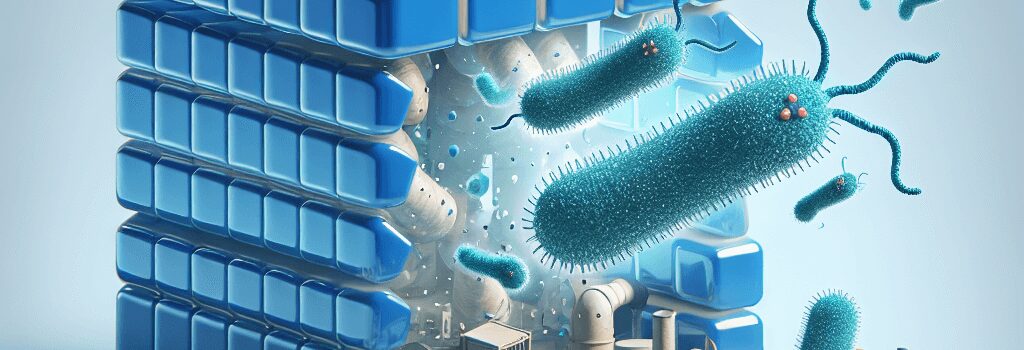Vibrio natriegens for Degradation of Industrial Wastes

In a groundbreaking study published in Nature (2025, DOI: 10.1038/s41586-025-08947-7), a team of bioengineers in Shenzhen has demonstrated a modular synthetic biology platform that consolidates five distinct catabolic gene clusters into a single strain of Vibrio natriegens. This organism, renowned for its 10-minute doubling time in saline media, was retrofitted to metabolize a suite of toxic aromatics—including biphenyl, phenol, naphthalene, dibenzofuran (DBF) and toluene—paving the way for efficient bioremediation of brackish and marine effluents.
Targeting Contaminants: From Single Genes to Multi-Cluster Assemblies
Industrial wastewater streams often contain complex mixtures of persistent organic pollutants (POPs) that resist conventional treatment. While diverse bacterial species have independently evolved to catabolize individual compounds, their application is limited by narrow substrate ranges and incompatible salinity requirements. To overcome these bottlenecks, the Shenzhen team selected V. natriegens for its halotolerance and rapid biomass accumulation under 2–3% NaCl conditions.
- Gene cluster sourcing: Nine operons (3–11 open reading frames each) were identified in disparate proteobacteria capable of degrading benzene, toluene, phenol, naphthalene, biphenyl, DBF and dibenzothiophene.
- Codon and promoter optimization: Each operon was re-designed for optimal GC content, ribosome binding site strength (RBS calculator v2.0), and σ70 promoter compatibility in V. natriegens.
- Assembly workflow: Synthetic DNA fragments (10–15 kb) were stitched via Gibson assembly in Saccharomyces cerevisiae before chromosomal integration using a CRISPR/Cas9–λ-Red recombineering pipeline targeting the neutral vntr locus.
Proof of Concept: Single-Strain, Multi-Substrate Conversion
Initial characterization of individual strains revealed active degradation for five operons. Sequential integration created a ‘cluster of clusters’ spanning ~45 kb. In batch assays (30 °C, pH 7.5, 2% NaCl), this engineered strain removed:
- 100% of naphthalene within 48 h
- ≥95% of toluene and biphenyl
- ~80% of phenol
- 30% of DBF
When applied to real-world brine wastewater from petrochemical plants, the consortium achieved >95% removal for most aromatic hydrocarbons and ~80% phenol clearance, outperforming mixed consortia by 20–30%.
Integrating Metabolic Pathways and Host Physiology
Unlike native degraders, V. natriegens lacks downstream catabolic enzymes (e.g., catechol 2,3-dioxygenase, muconate lactonizing enzyme) to assimilate ring-cleavage intermediates. Without metabolic sink, byproducts accumulate extracellularly, risking feedback inhibition. Dr. Li Wei, lead author, notes: “Future work will plug intermediate pathways into the central carbon metabolism via heterologous expression of the β-ketoadipate pathway, enabling full mineralization and biomass valorization.”
- Proposed integration of PcaIJFKGH operon from Pseudomonas putida into the PPP (pentose phosphate pathway)
- Dynamic control circuits using inducible promoters (e.g., AraC/PBAD) to balance growth and degradation
- Metabolomic profiling (LC-MS/MS) to map intermediate fluxes and prevent metabolite bottlenecks
Scale-Up Potential and Bioreactor Design
Translating bench-scale success to industrial flow-through systems requires careful reactor engineering:
- Continuous stirred-tank reactors (CSTR) with membrane biofilm carriers to maintain high cell density
- Optimized hydraulic retention time (HRT) of 24–36 h for complete turnover
- Real-time monitoring via on-line GC–MS sensors and automated pH/salinity control
Economic modeling suggests that, assuming a feed concentration of 200 mg/L total aromatics, operational expenditure (OPEX) could drop by 40% compared to activated carbon adsorption.
Regulatory and Environmental Considerations
Deploying genetically modified microorganisms (GMMs) in open environments raises biosafety questions. The team implemented:
- Multiple biocontainment modules: auxotrophy for diaminopimelic acid (DAP) and a riboswitch‐controlled kill switch activated by non-nativeophylline.
- Genetic safeguards: synthetic gene drives to prevent horizontal transfer of catabolic clusters.
- Risk assessment: adheres to WHO and OECD guidelines for GMM release in aquatic systems.
In pilot trials in a closed-loop coastal lagoon, no detectable transgene escape was observed over 60 days, supporting controlled field applications.
Expert Perspectives and Future Directions
According to Prof. Maria González (MIT Department of Biological Engineering), “This work is a milestone in modular bioremediation, integrating advanced genome editing with rapid-growth chassis design. The next leap will be automated pathway optimization through machine learning–guided mutagenesis.”
Ongoing efforts in the field include combining AI-driven enzyme engineering (e.g., AlphaFold-guided active site redesign) with microfluidic high-throughput screening to evolve pathways for emerging contaminants such as per- and polyfluoroalkyl substances (PFAS).
By uniting synthetic biology, systems engineering and bioprocess innovation, this research charts a path toward robust, scalable solutions for the world’s most recalcitrant waste streams.